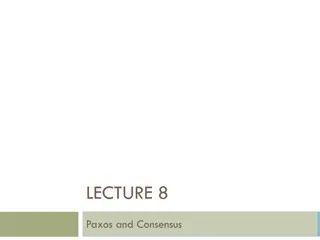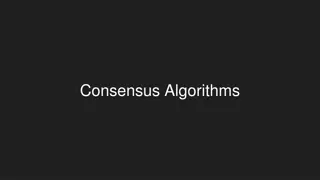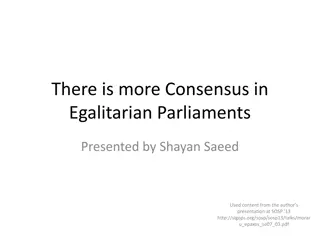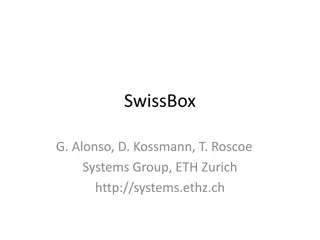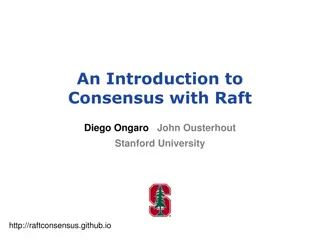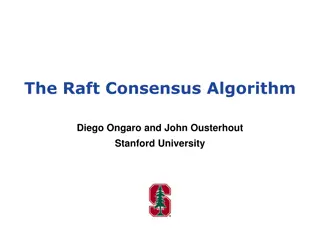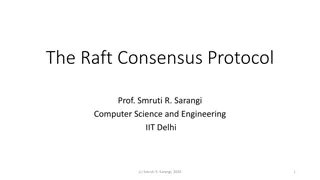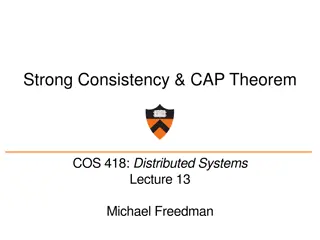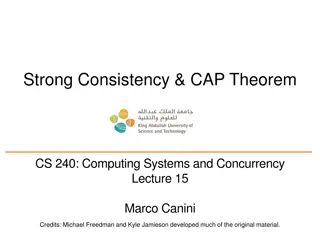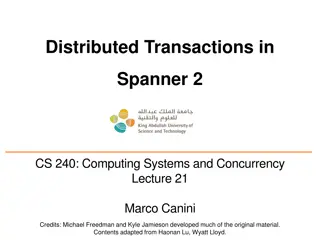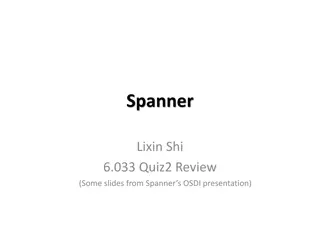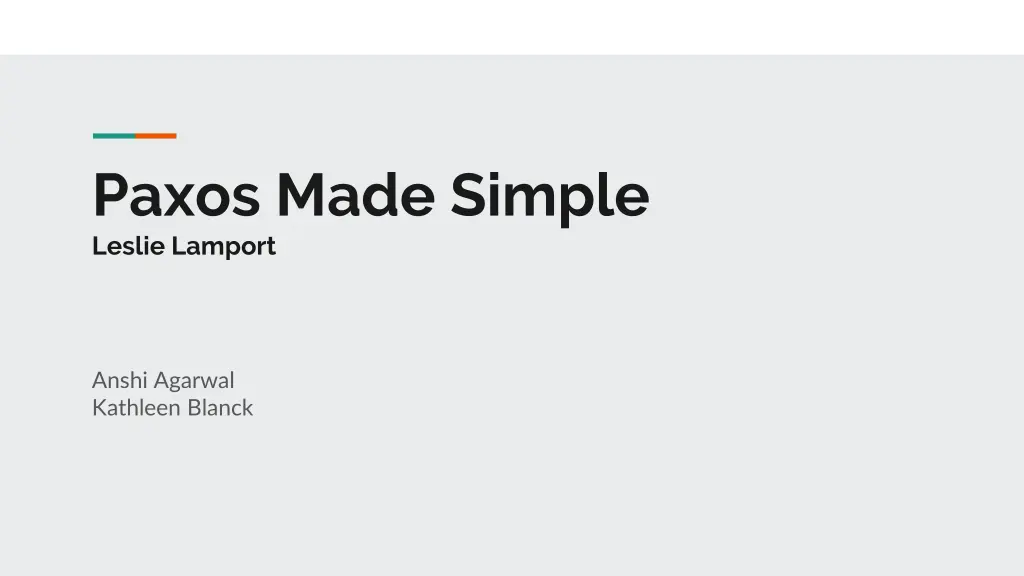
Understanding Paxos Consensus Algorithm
Explore the Paxos consensus algorithm explained in simple terms by Leslie Lamport. Learn about the consensus problem, roles in the algorithm, choosing values, and the key requirements for achieving consensus. Dive into the details of proposal acceptance and the shortcomings of certain requirements in the algorithm.
Download Presentation

Please find below an Image/Link to download the presentation.
The content on the website is provided AS IS for your information and personal use only. It may not be sold, licensed, or shared on other websites without obtaining consent from the author. If you encounter any issues during the download, it is possible that the publisher has removed the file from their server.
You are allowed to download the files provided on this website for personal or commercial use, subject to the condition that they are used lawfully. All files are the property of their respective owners.
The content on the website is provided AS IS for your information and personal use only. It may not be sold, licensed, or shared on other websites without obtaining consent from the author.
E N D
Presentation Transcript
Paxos Made Simple Leslie Lamport Anshi Agarwal Kathleen Blanck
Requirements of Consensus Algorithm Proposed value should be chosen Single value is chosen Processes are only told values that have been chosen
Roles in Consensus Algorithm Three major roles: Proposer Acceptor Learner
Requirements P1. An acceptor must accept the first proposal that it receives.
Requirements P2. If a proposal with value v is chosen, then every higher-numbered proposal that is chosen has value v. <proposal number, value> P2a. If a proposal with value v is chosen, then every higher-numbered proposal accepted by any acceptor has value v.
Requirements P2b. If a proposal with value v is chosen, then every higher-numbered proposal issued by any proposer has value v. P2b P2a P2
Requirements P2c. For any v and n, if a proposal with value v and number n is issued, then there is a set S consisting of a majority of acceptors such that either (a) no acceptor in S has accepted any proposal numbered less than n, or (b) v is the value of the highest-numbered proposal among all proposals numbered less than n accepted by the acceptors in S.
Requirements P1a. An acceptor can accept a proposal numbered n if and only if it has not responded to a prepare request having a number greater than n. 1 5 1 5 4 1 1 1 1 1 5 5 5 5 5 5 5 5
Dual Phase Algorithm Phase 1: Proposer selects a proposal n and sends a prepare request for n to a majority of acceptors Acceptor promises not to accept any proposals less than or equal to n (if n is the highest proposal it has received)
Dual Phase Algorithm Phase 1: Proposer selects a proposal n and sends a prepare request for n to a majority of acceptors Acceptor promises not to accept any proposals less than or equal to n (if n is the highest proposal it has received) Phase 2: If a majority of acceptors responds with a promise, it sends an accept request for proposal n with value v An acceptor will accept the proposal n if it has not received any higher numbered prepare requests
Distinguished Proposer Distinguished proposer, or leader, is the only server to send proposals to acceptors The validity of the leader is checked at given time intervals If the leader fails, a new election cycle is run to find a new distinguished proposer
Dual Phase Algorithm Phase 1: Proposer selects a proposal n and sends a prepare request for n to a majority of acceptors Acceptor promises not to accept any proposals less than or equal to n (if n is the highest proposal it has received) Phase 2: If a majority of acceptors responds with a promise, it sends an accept request for proposal n with value v An acceptor will accept the proposal n if it has not received any higher numbered prepare requests
We have an accepted proposal! What next? 5 5 5 5 5
Proposal -> Acceptance -> Learning Distinguished Learner: a server used to communicate an accepted value from acceptors to all other learners No Distinguished Learner: Distinguished Learner Set: Distinguished Learner: Delay as learner receives message then distributes Lower complexity Higher chance of lost messages Immediately informed All acceptors send n to all learners, meaning higher complexity Same delay as single Increase in complexity Much greater reliability
Implementation in a Network Each process is a proposer, acceptor, and learner In case of failure, new leader was a learner and has complete log Memory must be stable to maintain information during failures Commits are made to storage before responses are sent Disjoint set of numbers for different proposers
Paxos Algorithm as a State Machine Paxos is implemented on every server as a state machine ... A B i=1 i=2 i=3 i=n-1 i=n Each server is a deterministic state machine that takes client commands as input to progress to the next state Each server should progress in the same way with the same input
Paxos Algorithm as a State Machine Singleserver is elected as distinguished proposer Distinguished proposer decides sequence of commands
What happens when leader fails? Execute Phase 2 for instance 5 and 10, thereby choosing command 5 and 10 Cannot execute command 8-10 Phase 1 execution for instances 5-7 and all instances greater than 9
Solution : Propose No-op The No-Op will maintain the machine s state and look for previously accepted commands
Why the gap? Leader can propose command i+1 before it learns acceptance of i Leader can fail, leaving a gap in the sequence of chosen commands Can propose i+1 to i+k after commands 1...i are chosen, leaving a gap of k commands
Why No-op works? Proposing No-op helps in discovering commands Propose to fill gap with No-op Receive the actual lost command by some acceptor Use that command in accept phase instead of No-op
Conclusion Effective cost of achieving consensus is cost of executing Phase 2 Phase 2 of Paxos is the most optimal approach for consensus in presence of faults




